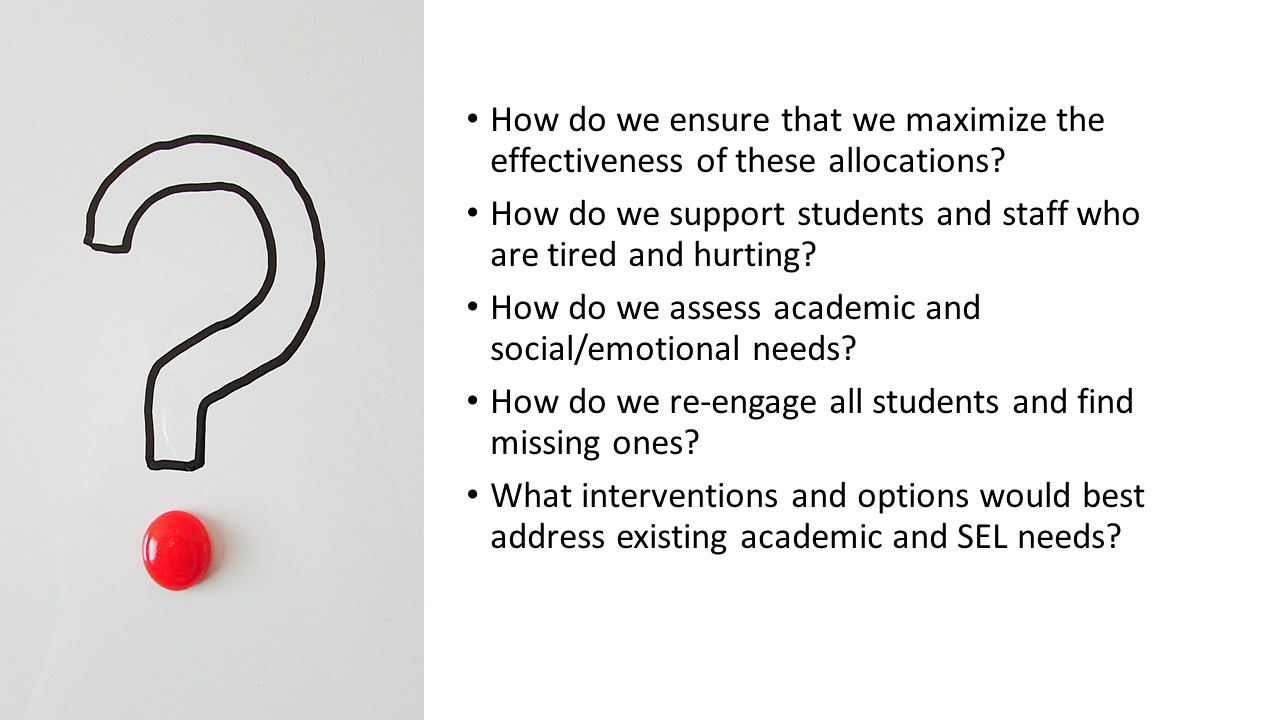Unprecedented funding is being made available to schools and districts to help with reopenings and COVID-related impacts. The crisis of the pandemic has taken a toll on everyone. As the crisis was unfolding, it was all we could do to stay afloat – there was little chance to think ahead. Now that the dust is clearing, what next?
The federal stimulus dollars provide opportunities for addressing any “learning loss” (or “schooling loss” – academic or SEL) that may have occurred during shutdowns – and for helping close academic and opportunity gaps that may have already existed. These investments in our children can and should make a difference in students’ lives now and for years to come.
The Big Questions
Planning for a restorative restart begins with some big questions:

People may debate the degree to which school closures affected students’ academic and social-emotional wellbeing. But one thing is clear – the pandemic and the school closures affected all students. Just as it’s clear that not all students start in the same academic place, it’s also clear that different groups of students have been affected differently. So how to do we allocate funding where it’s needed while still ensuring it is fair and equitable?
Key Questions for Planning Wisely
We need to choose wisely – and we need careful planning to optimize the impact of these dollars. in putting together a student recovery plan, some questions to consider include:
- What are different student population’s unique needs for recovery efforts?
- How will you assess needs and determine priorities?
- What are the specific goals and objectives for each of these student populations?
- What interventions/learning opportunities should you consider?
- How will you determine who should receive which services?
- How can we re-engage students?
- Are implementation plans detailed with clear steps, responsibilities and timing indicated?
- How will recovery efforts be communicated?
- How will recovery efforts be funded and how will you ensure the district meets federal/state stipulations?
- How do you ensure the support of key stakeholders?
A plan that addresses these questions will ensure the dollars are well-directed. It will allow needed resources to get where they can do the greatest good. A plan like this supports and demonstrates district priorities and goals.
Excellent execution flows from excellent planning. As a wise man once said, “Excellence is never an accident. It is always the result of high intention, sincere effort, and intelligent execution.” – Aristotle
Looking for more? Check out these related blog posts
Optimize ARP Opportunities with Your Best Thinking
Meeting the Challenges of SPED Funding Opportunities